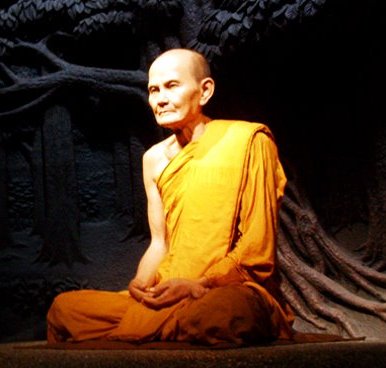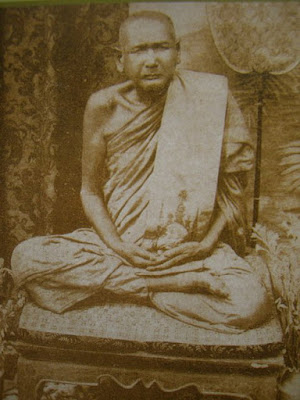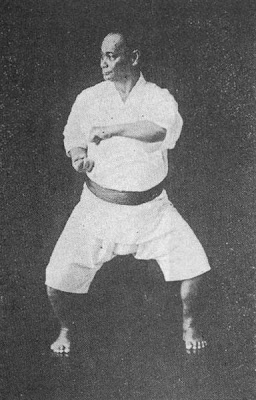
|
Adult practice: Part 44 
|
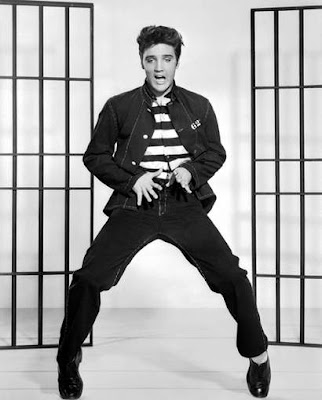 |
In November of last year I wrote about the difference between the hips being "in" and "out", my somewhat sloppy translation for the Japanese expressions "koshi ga haitteiru" and "koshi ga nuketeiru". Look at the two photographs above: Karateka Motobu Choki is demonstrating a kata, his hips are "in". The singer on the right, who goes by the name of "Elvis the pelvis" (not to be confused with the real Elvis in the center) is shaking his hips. In this position, they are "out". You can see the difference in balance between the two.
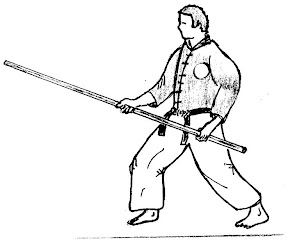 In most forms of Japanese martial arts, it is essential that the hips are "in". The only exception maybe is judo, as the fighters try to avoid being gripped by the opponent. One reason for this is balance. By moving the hips forward, the center of gravity stays low, giving stability to the physical posture.
The other alternative, having the hips "out" is also called "nige-koshi" in Japanese, which literally means "hips that try to escape". If you face your opponent with the hips "out", you are already on the defence.
In most forms of Japanese martial arts, it is essential that the hips are "in". The only exception maybe is judo, as the fighters try to avoid being gripped by the opponent. One reason for this is balance. By moving the hips forward, the center of gravity stays low, giving stability to the physical posture.
The other alternative, having the hips "out" is also called "nige-koshi" in Japanese, which literally means "hips that try to escape". If you face your opponent with the hips "out", you are already on the defence.
This is true not only for the physical aspect. With hips "out", your mind will be "out" as well. In the case of martial arts, when the hips "try to escape" your mind will try to escape as well and you are unable to face your opponent. In the case of zazen, with the hips "out", not only will your posture be unstable, but also your mind will not be in the present moment. You will be either sleeping, day-dreaming or thinking. Or meditating, maybe.

| This is Asashoryu, the speediest of the sumo wrestlers. Asashoryu and Hakuho are the two yokozuna, the fighest ranking sumo wrestlers. Both of them are Mongolians. |

|
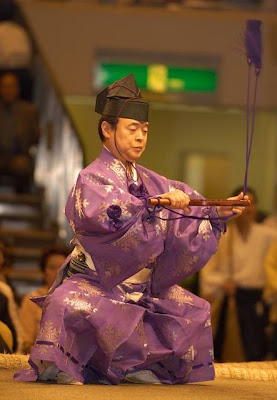
|
The gyoji, or referees, also need to have the hips "in". They almost move like noh dancers. Below you see the yokozuna with two assisting wrestlers and a gyoji during the entrance ceremony.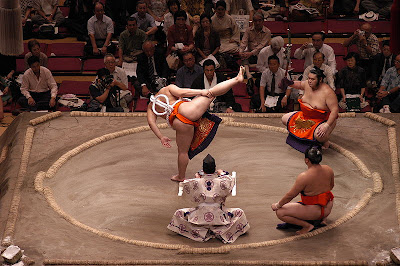
|
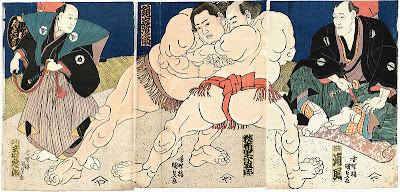
| But not only for sumo wrestlers the hips are important. For carrying water, a simple task performed by many people daily worldwide, you also need to have the hips "in". |

|
| These three ladies' posture looks just as stable as a sumo wrestler's. Again, it is thanks to their hips being "in". |

|
|
| Forget about the Zen garden. Watch the hips! |
Now let us look for some examples from professional meditators who should know the importance of the hips best. Look at some results of a quick search at Google Images for "meditating monks":

| Buddhist monks sit below the Bodhi-tree in Bodhgaya. Are they just tired from their pilgrimage? |
| Or does no-one teach them how to sit? I see the same pattern everywhere: Hips "out", knees in the air, chin raised high... |
|

|
A portrait of the famous Buddhadasa Bhikkhu. Is his back bent because of his old age? Or was he told to sit like this from early childhood, like these poor little kids?

|

| Yes, it is boring! When does the bell finally ring? Is something wrong with the clock? |

|
I once participated in a ten day vipassana retreat and received instruction in the sitting Theravada style. Basically, it seemed that the teacher was much more concerned with what you did with your mind than with what you did with your body. With the mind, we were watching our breath for the first three days, and then we skipped to scanning our physical sensations from tip to toe, up and down, down and up, all day.
So, exactly how we sat seemed to be not so important. What mattered was what we did while we sat. We sat and meditated. That is quite different from what I do now at Antaiji. Here I just sit. It is called shikantaza.
Someone might ask: How does this "shikantaza" differ from sitting in the commuter train on the way to work, or sitting in front of a TV set, or sitting on a park bench feeding the birds (or eyeing little girls?). When you say you "just sit", what more do you do than that?
The answer is of course: I do not do anything more, I simply do less. I just sit. Actually, what I am aiming at is not me doing some practice called shikantaza (just sitting). It is just sitting, without me or anything. I have to disappear in the sitting. Therefore it is very important how I sit. The hips need to be "in" for me to be in the sitting, and to be absorbed by the sitting.
Please do not tell me you are practicing shikantaza when you sit like this:
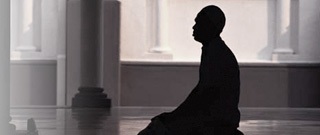
| <<< Previous chapter | Contents | Next chapter >>> |



